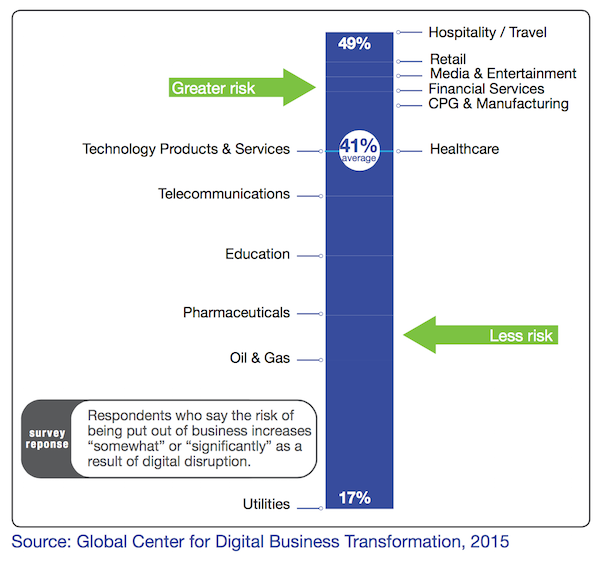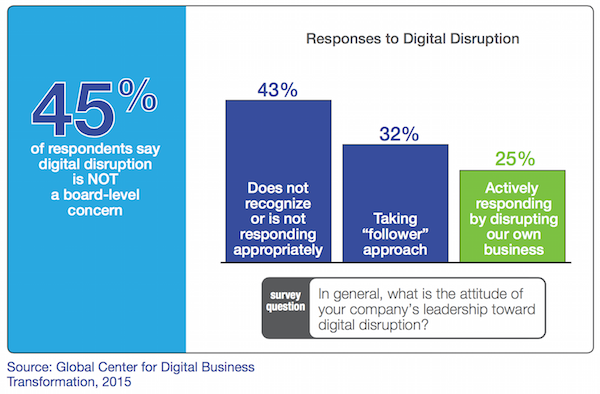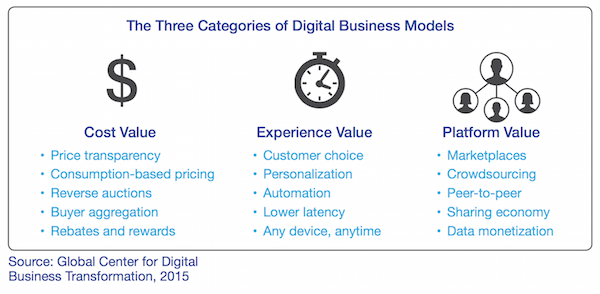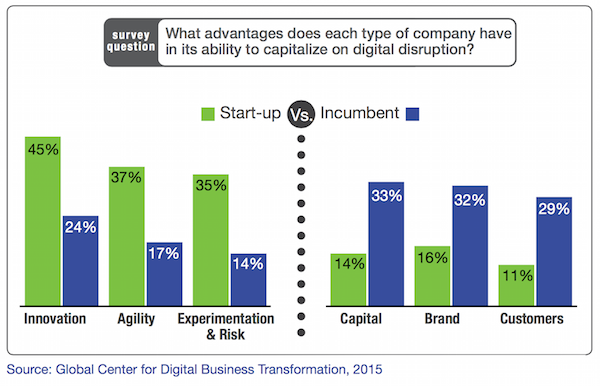
The rock singer Jim Morrison once said about life, “Nobody gets out of here alive.”
As the world continues its digital metamorphosis, we could riff on that: “Nobody gets out of here undisrupted.”
Digital will disrupt your business. Odds are, it will happen sooner, faster, and to a far greater degree than you dare to imagine. The only question is who will be your disruptor. An industry insider or an industry outsider? An incumbent firm or a brand new start-up?

This question opens an excellent new book, Digital Vortex, by Jeff Loucks, James Macaulay, Andy Noronha, and Michael Wade.
Born from a collaboration between three Cisco executives in the company’s digitization office, which helps both Cisco and its customers embrace new digital business models — Jeff, James, and Andy — and Michael Wade, a professor of innovation and strategy at IMD and the director of the univeristy’s Global Center for Digital Business Transformation, Digital Vortex frames the threat of digital disruption across a wide range of industries from the authors’ extensive research. You can visit their website at digitalvortex.com.
(So if you’re still using Uber as your default example of digital disruption, this will broaden your repertoire.)
Of course, you might ask, “Isn’t digital disruption just assumed by now?”
Unfortunately, for many businesses, the answer is “no” — at least not yet at the level necessary to drive fundamental change. From the research presented in the book, 45% of respondents said that digital disruption is not a board-level concern. Another 43% feel their company’s leadership isn’t responding appropriately.

Only 25% of those survey felt their company was proactively responding to digital disruption by disrupting their own businesses — before somebody else does.
So Digital Vortex opens up by making the board-level and C-suite-level case for why digital disruption is a real, existential threat. But it quickly goes deeper to examine what strategic options businesses have to address it:
- Retreat (defensive) — withdraw from threatened business segments (why lose more money when you’ve already been defeated); live to fight another day somewhere else.
- Harvest (defensive) — block disruptive threats as best you can and optimize performance of a threatened business segment (i.e., squeeze every last ounce of profit out of a business that is ultimately doomed to decline).
- Disrupt (offensive) — proactively disrupt your own business or create a new one around an identified “value vacancy”, a market opportunity that can be profitably exploited via digital disruption.
- Occupy (offensive) — sustain the competitive gains associated with a Disrupt strategy by prolonging the longevity of the company’s claim on that value vacancy; it’s managing and optimizing the growth of a disruptive venture at scale.
These “value vacancies” are one of the more interesting concepts described in Digital Vortex. The authors systematically examine the sources of value to customers that digital disruptors harness — cost value, experience value, and platform value:

But strategy, the authors caution, only gets you part of the way in navigating digital disruption. Ultimately, companies must adapt to the new dynamics of running a business in a digital world — what they call “digital business agility” — which requires:
- Hyper-awareness
- Informed decision-making
- Fast execution
The authors pull no punches on corporate “planning,” which oftens suppresses this agility.
“Companies conflate strategy, which requires speed and flexibility, with planning, which is rigid and often ponderous,” they hammer away. “Senior executives must set a strategic vision for their companies, but must not fall victim to the siren song of annual and multi-year plans.”
“We believe incumbents must instead build a set of capabilities that will enable them to move with the speed, fluidity, and effectiveness of disruptors.”

It’s powerful, if not surprising, to be reminded of the relative advantages between start-ups and incumbents. Start-ups wield innovation, agility, and experiementation, while incumbents leverage capital, brand, and customers.
But if incumbents could learn enough of the strategic and operational dynamics of start-ups — as the authors of Digital Vortex and I both believe is possible — they could have the best of all worlds.
Think that dares to dream too much? Consider the native digital incumbents — companies like Amazon — who have found ways to apply all six of those advantages on a scale measured in hundreds of billions of dollars. That’s the digital vortex.
PROMOTIONAL ALERT: lead author Michael Wade will be one of our featured speakers at MarTech Europe, November 1-2, presenting Digital Disruption Deconstructed. This is your last week to purchase tickets at the discounted “beta” rate — prices increase after September 30.



